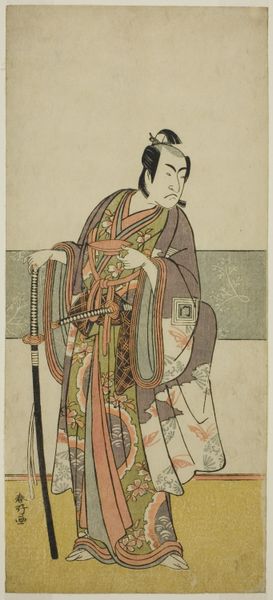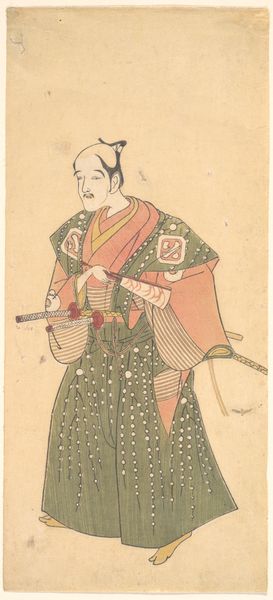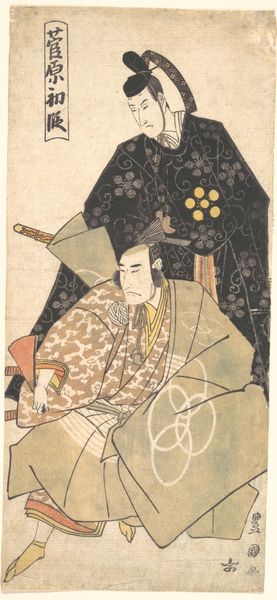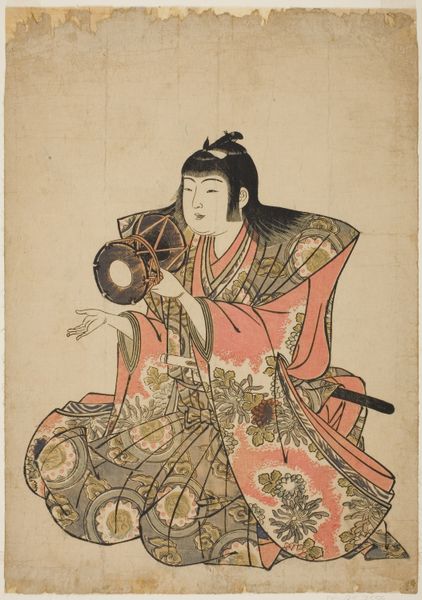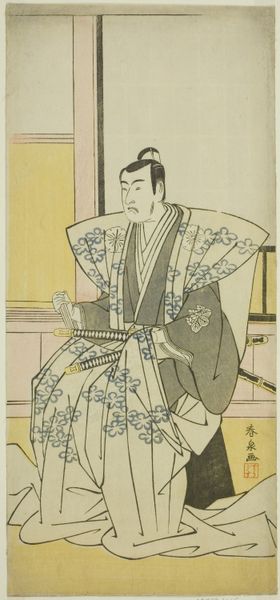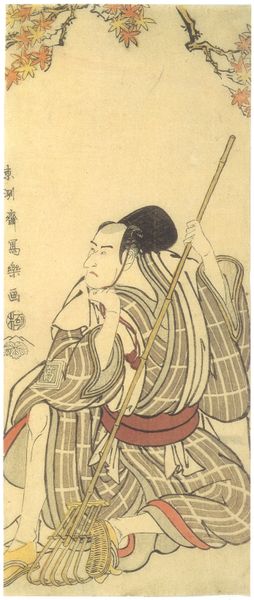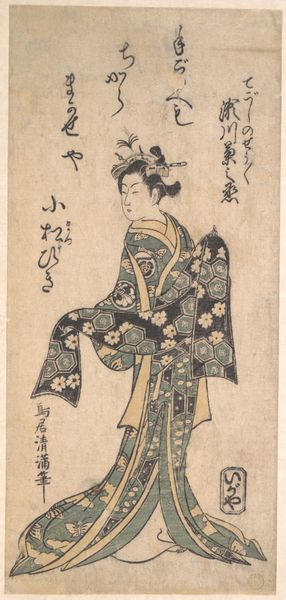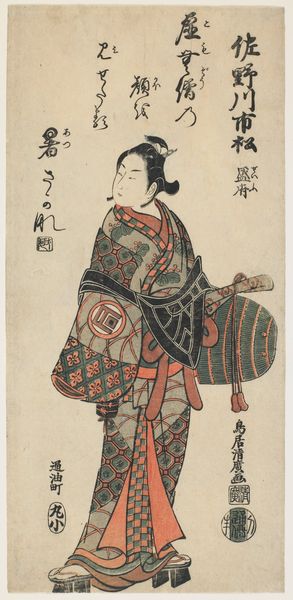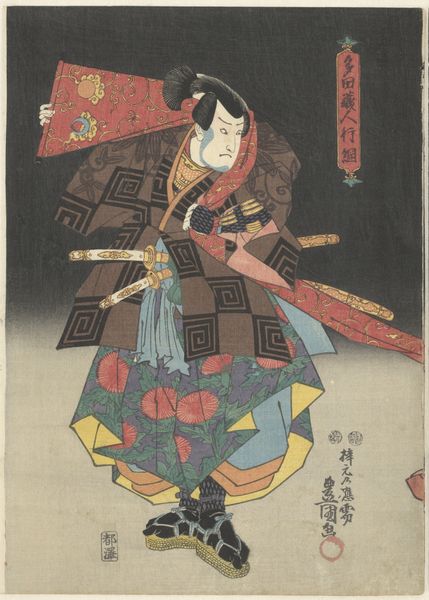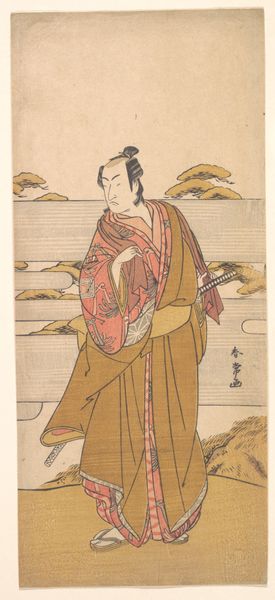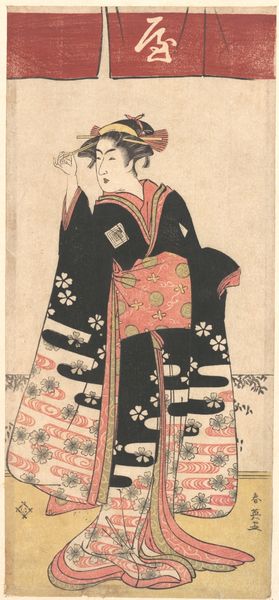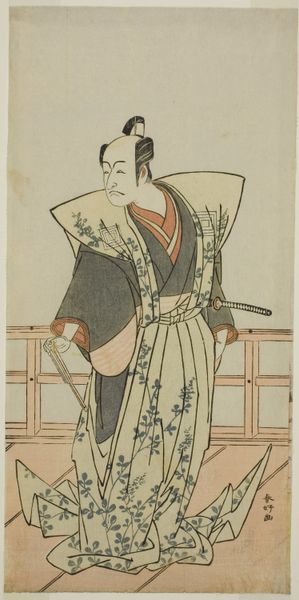
print, woodblock-print
#
portrait
# print
#
asian-art
#
ukiyo-e
#
woodblock-print
#
genre-painting
Dimensions: H. 14 9/16 in. (37 cm); W. 9 7/8 in. (25.1 cm)
Copyright: Public Domain
Editor: This is “A Boy Singer,” a woodblock print made sometime between 1789 and 1820 by Kitao Shigemasa. It's interesting how the floral pattern in his clothing almost clashes with the smooth, blank expression on the boy's face. What can you tell me about the materials used to create this image? Curator: The use of woodblock printing here isn't just about aesthetics, it's deeply connected to the economic structures of Edo-period Japan. The process—carving, inking, and pressing—involved multiple artisans. Look at the distinct lines, the color gradients in the robe. These indicate various blocks and stages of production. This was a system of collaborative labor, fundamentally different from singular artistic creation we might think of today. How does understanding this change how you view the image? Editor: I suppose I hadn't really thought about the "making of" versus just the image. Thinking about the multiple artisans involved highlights the social aspect of this artwork that I had missed! Did Shigemasa directly oversee the printmaking? Curator: Likely, Shigemasa designed the print, but specialist artisans carved the woodblocks and printed the final image. This separation of design and execution challenges the Western concept of the artist as the sole creator. The value wasn't necessarily in unique artistry but rather in skilled craftsmanship and replicability. Ukiyo-e prints, like this, were commodities, reflecting the growing urban culture and consumption of images in Edo. This piece, a 'portrait,' moves beyond the likeness to enter into dialogue of cultural economy and production. Now, looking again, can we consider how his pose is also 'performed' and perhaps reproducible? Editor: It makes the image less about individual genius and more about collective skill and economic factors, and also, accessibility! I also see that this image of a 'boy singer' might speak volumes about commodified social relations through class and gender during that period. Curator: Precisely! The circulation of such prints reinforced social hierarchies while simultaneously democratizing art consumption. It is a cultural artifact inseparable from its means of production. Editor: Wow, I am beginning to look at art completely differently. Thanks for broadening my perspective! Curator: My pleasure. Always remember that materiality tells stories, and those stories are always deeply intertwined with society.
Comments
No comments
Be the first to comment and join the conversation on the ultimate creative platform.

